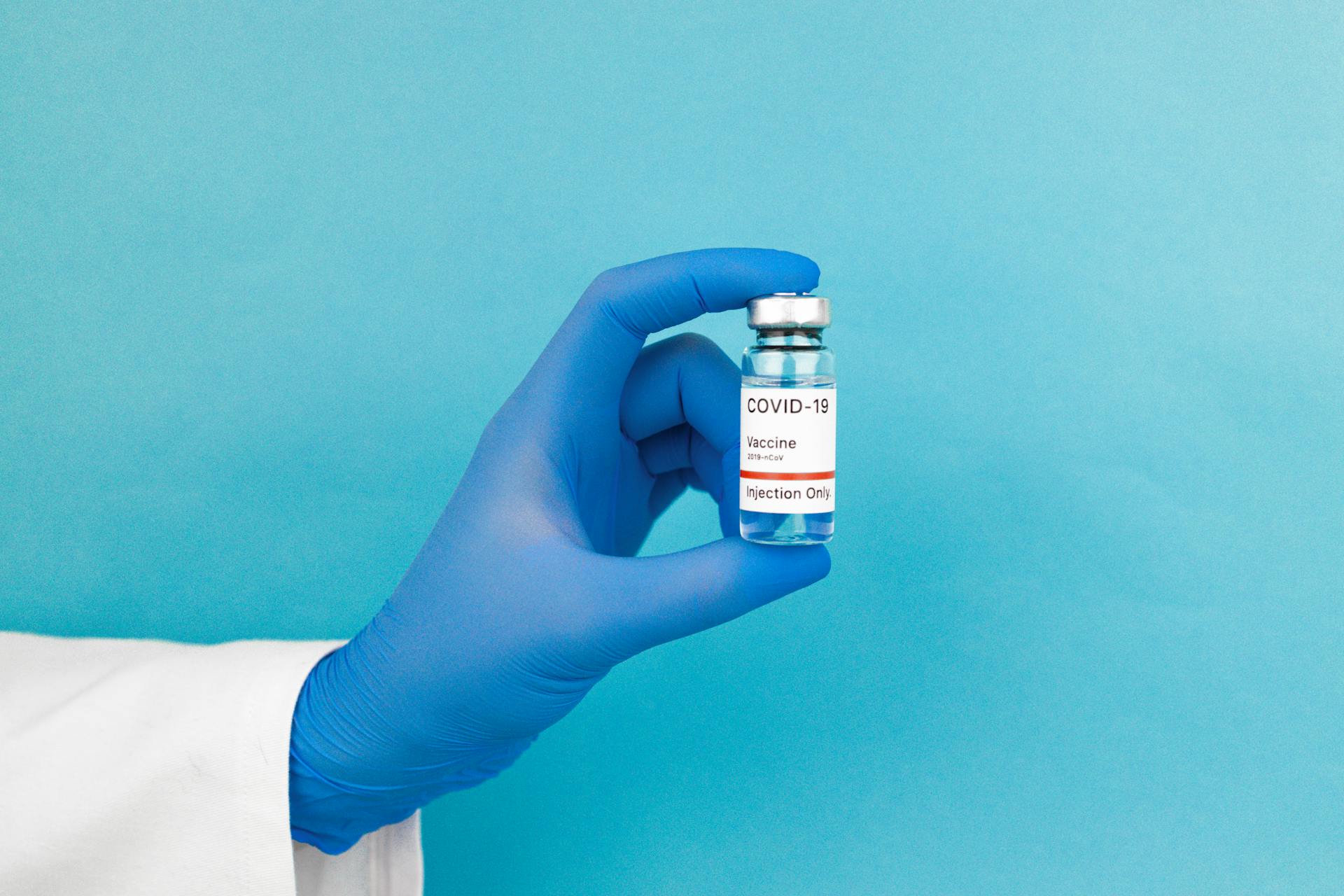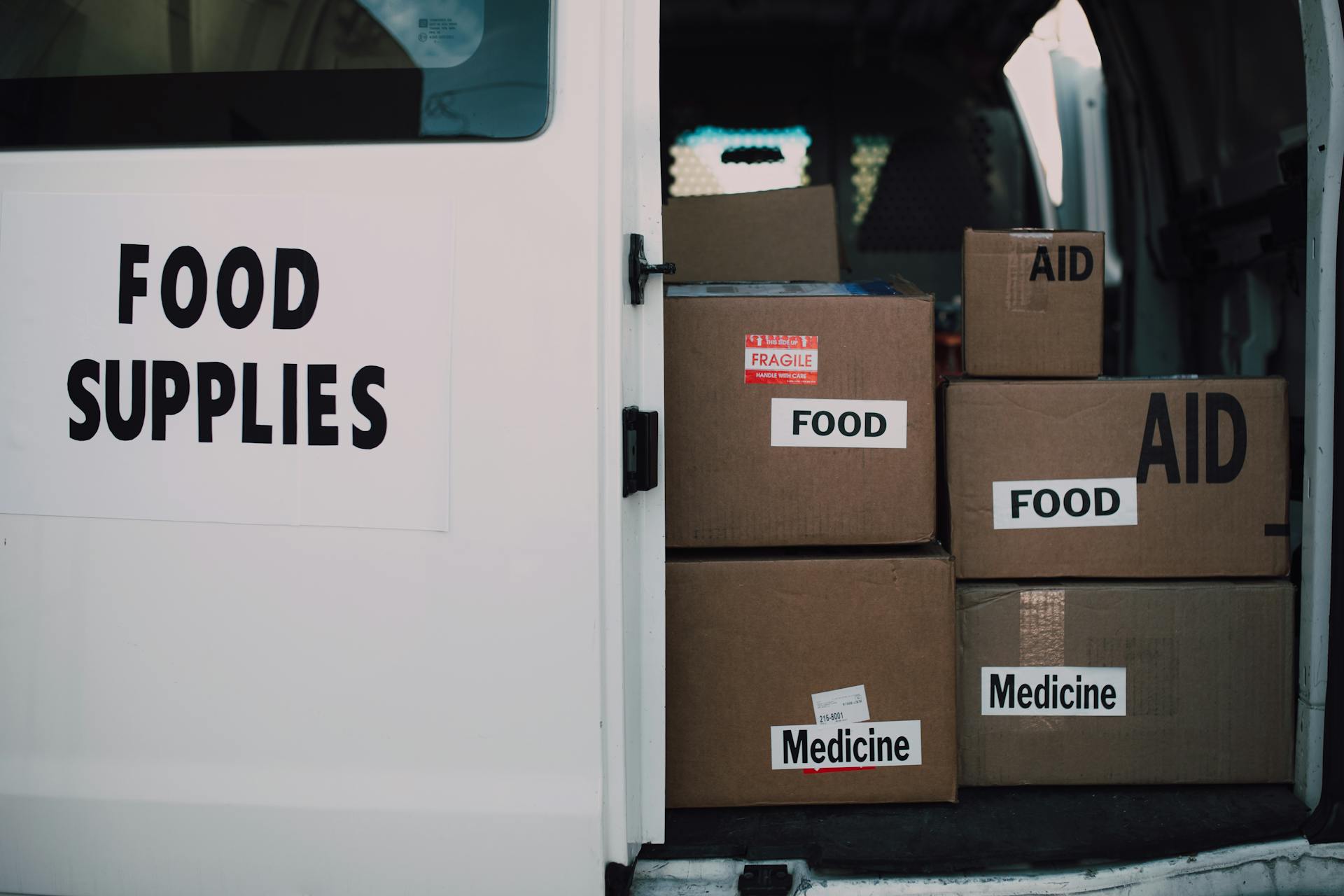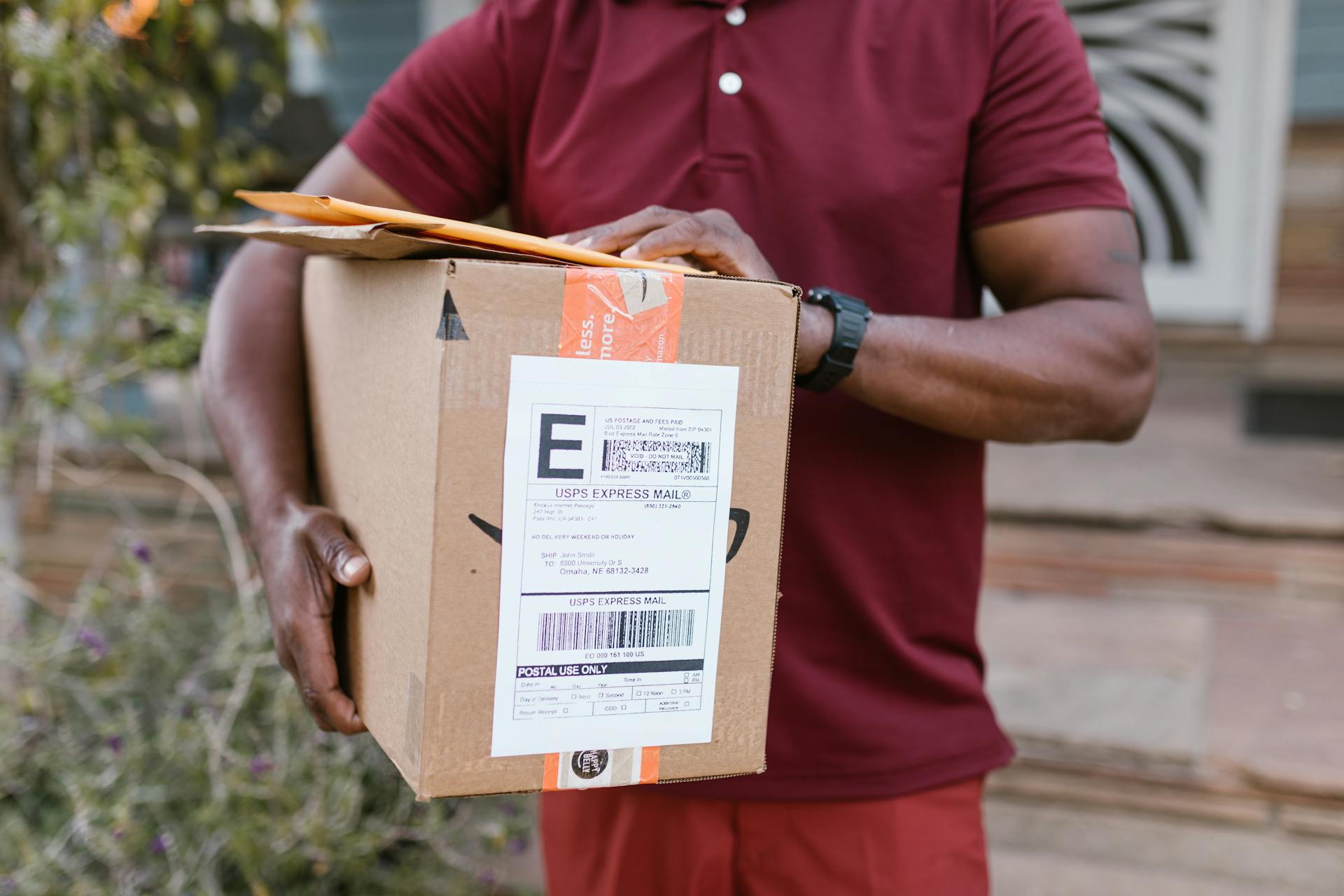
Package labeling compliance is crucial in the US, and it's not just about meeting regulations - it's about ensuring consumer safety and trust.
The Federal Trade Commission (FTC) requires clear and accurate labeling on all consumer products, including packaging.
In the US, the FDA is responsible for regulating food, drug, and cosmetic labeling, while the FTC handles labeling for other consumer products.
The FDA requires that all food labels include the product name, net quantity of contents, and ingredient list.
Worth a look: Labeling a Package Usps
Regulatory Framework
The regulatory framework for package labeling is governed by various laws and regulations. The Uniform Packaging and Labeling Regulation (UPLR) allows metric net quantity declarations on consumer packages, while also permitting metric labeling on non-consumer packages.
State and local laws have also implemented regulations, requiring all scales, gas pumps, and other weighing and measuring instruments used in trade and commerce to be calibrated to use the SI system. This includes unit pricing for products sold by weight, which can be displayed in metric units such as price per kilogram or price per 100 grams.
Importers and manufacturers of textile fiber, wool, and fur products must provide specific information on their product labels, including fiber content, manufacturer's name or registered identification numbers, and country of origin.
For more insights, see: Product Labeling Machine
Proposed Rule

The FDA is proposing a new rule that would require a front-of-package (FOP) nutrition label on most packaged foods. This label, called the Nutrition Info box, would provide consumers with simplified, at-a-glance information about the saturated fat, sodium, and added sugar content of a food.
The Nutrition Info box would display these nutrients as "Low", "Med", or "High" to help consumers quickly identify how foods can be part of a healthy diet. This would complement the existing Nutrition Facts label, which provides more detailed information about the nutritional content of a food.
The FDA's proposed rule is based on current federal dietary recommendations, which advise consumers to limit saturated fat, sodium, and added sugar to achieve a nutrient-dense diet within calorie limits. While calories would not be included in the Nutrition Info box, manufacturers could voluntarily declare calories on the front of the food package.
The proposed FOP nutrition labeling has the potential to be a landmark policy, similar to the Nutrition Facts label. This new label could help consumers compare similar foods and identify healthier options based on the information included in the box. For example, when comparing yogurt, the Nutrition Info box could help identify a yogurt that is lower in added sugars.
Here are some key features of the proposed Nutrition Info box:
- Simplified, at-a-glance information about saturated fat, sodium, and added sugar content
- Display of these nutrients as "Low", "Med", or "High" to help consumers quickly identify healthy options
- Complements the existing Nutrition Facts label, providing more detailed information about the nutritional content of a food
- Manufacturers could voluntarily declare calories on the front of the food package
TSCA
TSCA plays a significant role in regulating various products. The Toxic Substances Control Act sets labeling requirements for certain products.
Composite wood products, such as hardwood plywood, particleboard, and medium density fiberboard, require specific labels. These labels must bear the producer's name, lot number, EPA TSCA Title VI TPC number, and a statement indicating TSCA Title VI certification.
Imported composite panels or bundles of such must also carry these labels. The labels should include the panel producer's name, lot number, EPA TSCA Title VI TPC number, and a statement that the products are TSCA Title VI certified.
Products that do not carry adequate warning or caution statements are not compliant with TSCA regulations. This includes composite wood products that fail to meet labeling requirements.
Expand your knowledge: Cake Box Name
Consumer Information
Consumer information is a crucial aspect of package labeling. The FDA undertook research and engaged the public on front-of-package labeling before issuing a proposed rule.
Suggestion: Labeling a Package for Shipping
The proposed Nutrition Info box is informed by a substantial body of research, including a scientific literature review, consumer focus groups, and a peer-reviewed experimental study. The experimental study showed that the black and white Nutrition Info scheme with the percent Daily Value performed best in helping consumers identify healthier food options.
The FDA also conducted consumer focus groups in 2022 and 2023 to gather feedback on front-of-package labeling. These studies helped identify which FOP schemes enabled participants to make quicker and more accurate assessments of the healthfulness of a product based on the levels of saturated fat, sodium, and added sugars displayed.
Here are some key findings from the FDA's consumer research:
- Front-of-Package Focus Groups - 2022
- Front of Package Focus Groups-2 - 2023
- Experimental Study
In addition to front-of-package labeling, the FDA also requires that mandatory label information be present on the outer container or wrapper of the retail package. This includes information such as the net weight, ingredients, and any warnings or cautions.
Consumer Research and Engagement
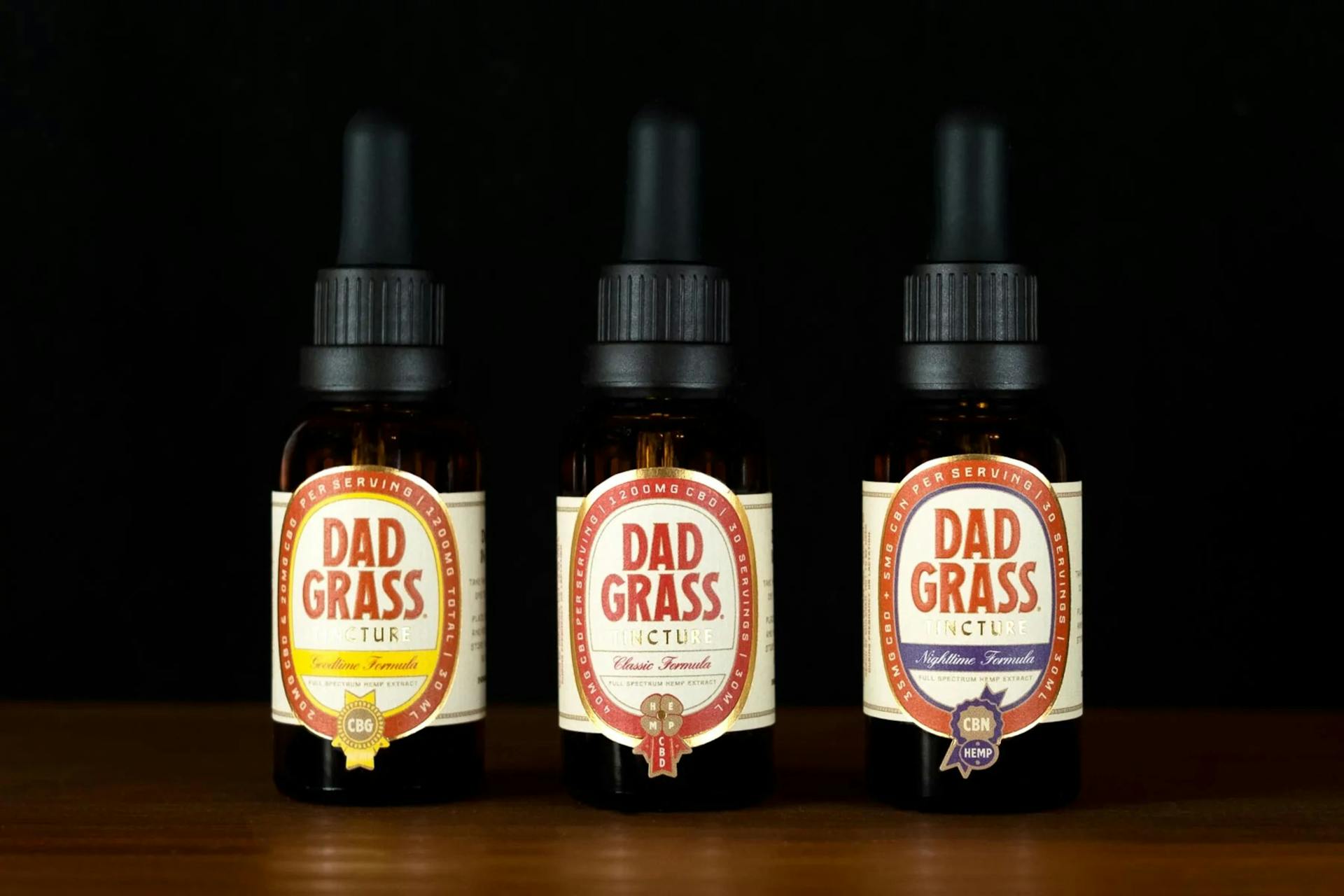
Consumer Research and Engagement was a crucial step in developing the proposed Nutrition Info box. The FDA conducted a scientific literature review, consumer focus groups, and a peer-reviewed experimental study to inform the design.
The FDA hosted a public meeting on front-of-package labeling with the Reagan-Udall Foundation for the FDA on November 16, 2023. This meeting provided an opportunity for the public to engage with the initiative.
A substantial body of research was conducted by the FDA, which included an experimental study of nearly 10,000 U.S. adults. The purpose of this study was to identify which FOP schemes enabled participants to make quicker and more accurate assessments of the healthfulness of a product.
The experimental study showed that the black and white Nutrition Info scheme with the percent Daily Value performed best in helping consumers identify healthier food options. This is an important finding, as it suggests that a clear and simple design can effectively communicate nutrition information to consumers.
Here are some data collections and reports associated with the FOP consumer research:
- Front-of-Package Focus Groups - 2022
- Front of Package Focus Groups-2 - 2023
- Experimental Study
Information
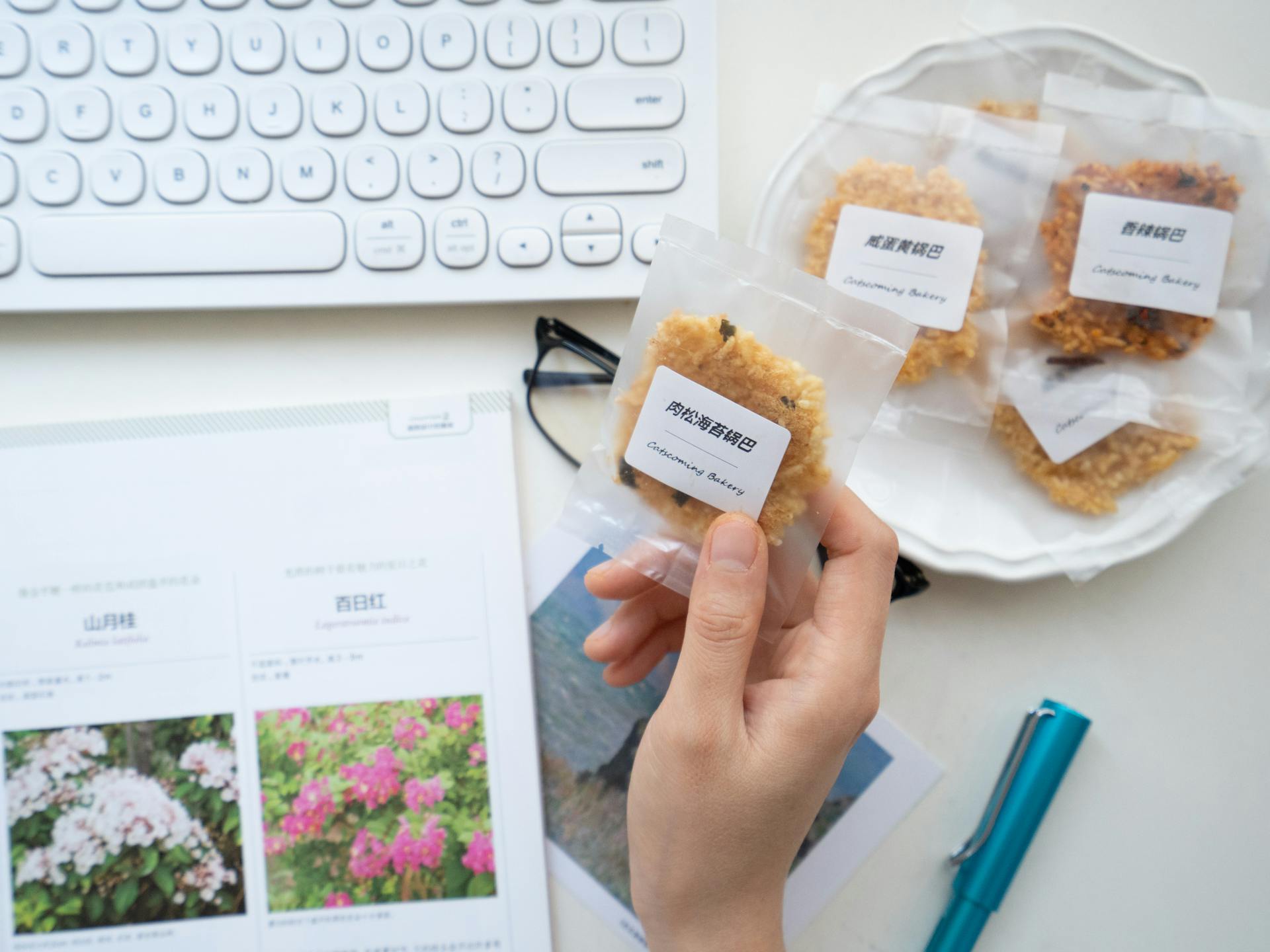
Consumer information is crucial for making informed decisions. The FDA undertook research and engaged with the public on front-of-package labeling before issuing a proposed rule. A public meeting was hosted by the Reagan-Udall Foundation for the FDA on November 16, 2023, to discuss front-of-package labeling.
The FDA conducted a scientific literature review, consumer focus groups, and a peer-reviewed experimental study to inform the proposed Nutrition Info box. The experimental study involved nearly 10,000 U.S. adults and showed that the black and white Nutrition Info scheme with the percent Daily Value performed best in helping consumers identify healthier food options.
To ensure compliance with labeling regulations, it's essential to understand what constitutes a package. According to § 1.20 of the regulations, a package refers to any container or wrapping that encloses a food, drug, device, or cosmetic for retail sale. This does not include shipping containers or wrappings used solely for transportation.

Mandatory label information must be displayed on the outer container or wrapper of the retail package. This includes the net weight placement requirement, which is waived if the unit containers are not intended to be sold separately. The label must also include a statement of differences of opinion with respect to warnings, including contraindications, precautions, adverse reactions, and other information relating to possible product hazards.
Labeling information for consumer products is governed by ASTM D-4236, which requires the following information:
- Statement of conformance
- Signal word “WARNING” (when chronic hazards exist)
- List of potentially chronic hazards
- Name of chronically hazardous components
- Safe handling instructions
- List of sensitizing components
- Combined statement (for more than one chronic hazardous component)
- Phrases stating information sources
- Chronic hazard statements
- Precautionary statements
Other label information may include the "Do Not Remove" statement, filling materials (Weight %), Uniform Registry Number (URN), and company name.
Labeling Requirements
Labeling Requirements can be a complex and overwhelming topic, but don't worry, we've got you covered.
The Fair Packaging Labeling Act (FPLA) requires labeling of products in the United States, and manufacturers must comply with acts and regulations such as the Poison Prevention Packaging Act (PPPA) and Uniform Packaging and Labeling Regulation (UPLR).
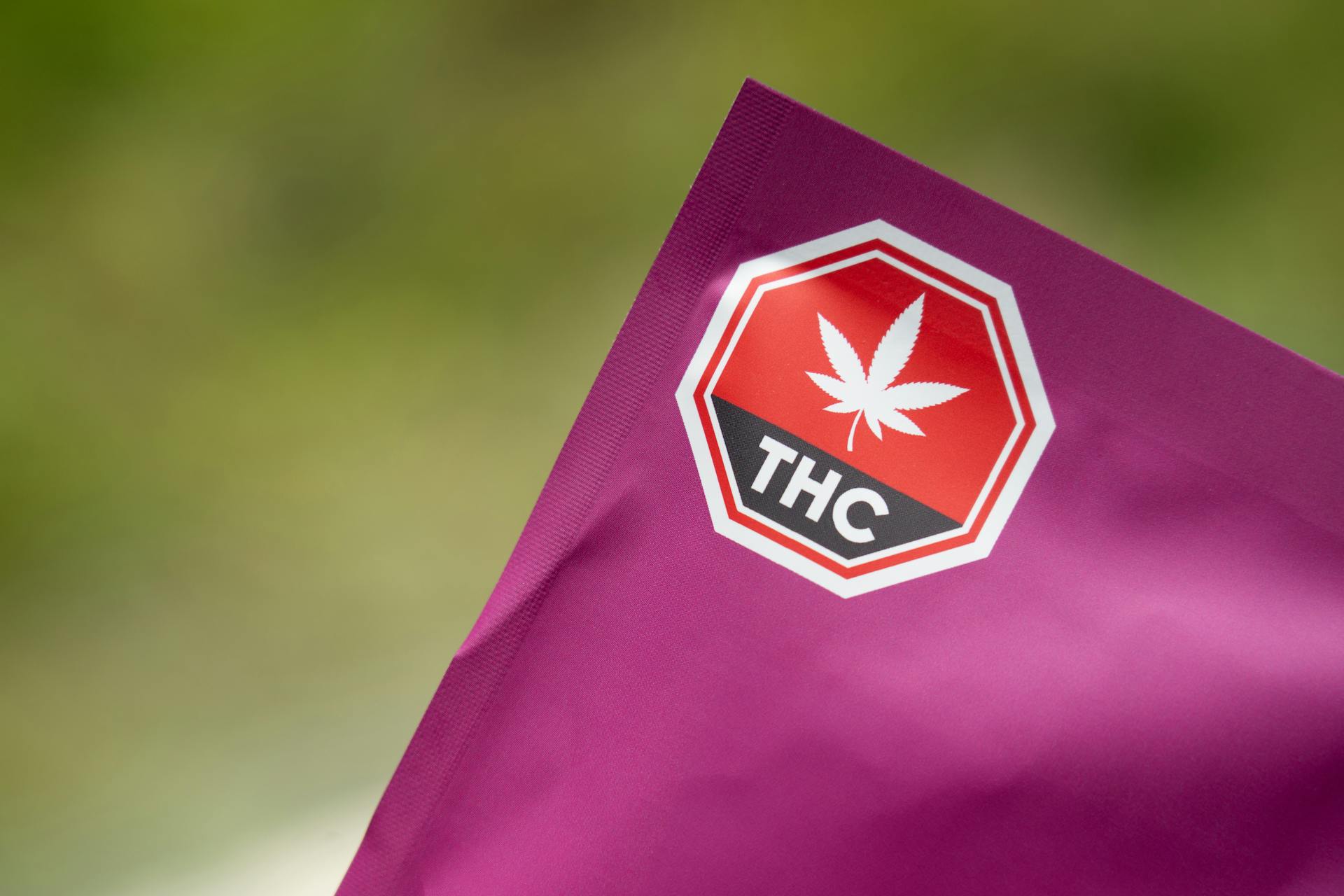
Some specific labeling requirements include displaying the ISPM 15 Mark on wood packaging materials and using packaging recycling symbols to indicate recyclable materials. You might also need to include a Bag suffocation warning on certain products.
Here are some key labeling requirements to keep in mind:
- FPLA: Fair Packaging Labeling Act
- PPPA: Poison Prevention Packaging Act
- UPLR: Uniform Packaging and Labeling Regulation
- ISPM 15 Mark: International Standard for Phytosanitary Measures 15
- Packaging recycling symbols: Indicate recyclable materials
- Bag suffocation warning: Required on certain products
United States Requirements: A Complete Guide
In the United States, product packaging labeling requirements are established in acts and regulations such as the Fair Packaging Labeling Act (FPLA), Poison Prevention Packaging Act (PPPA), and Uniform Packaging and Labeling Regulation (UPLR). These requirements apply to products imported or manufactured in the US.
The FPLA requires net quantity of contents information on packages sold on the basis of weight or measure, but it does not apply to electronic or industrial equipment. The UPLR allows metric net quantity declarations on consumer packages not subject to federal regulations.
Product labeling must inform consumers of the filling materials, as required by the US Law Label. This label is necessary for products like bedding, plush toys, and bean bags.
Check this out: Us Mail Package Tracking
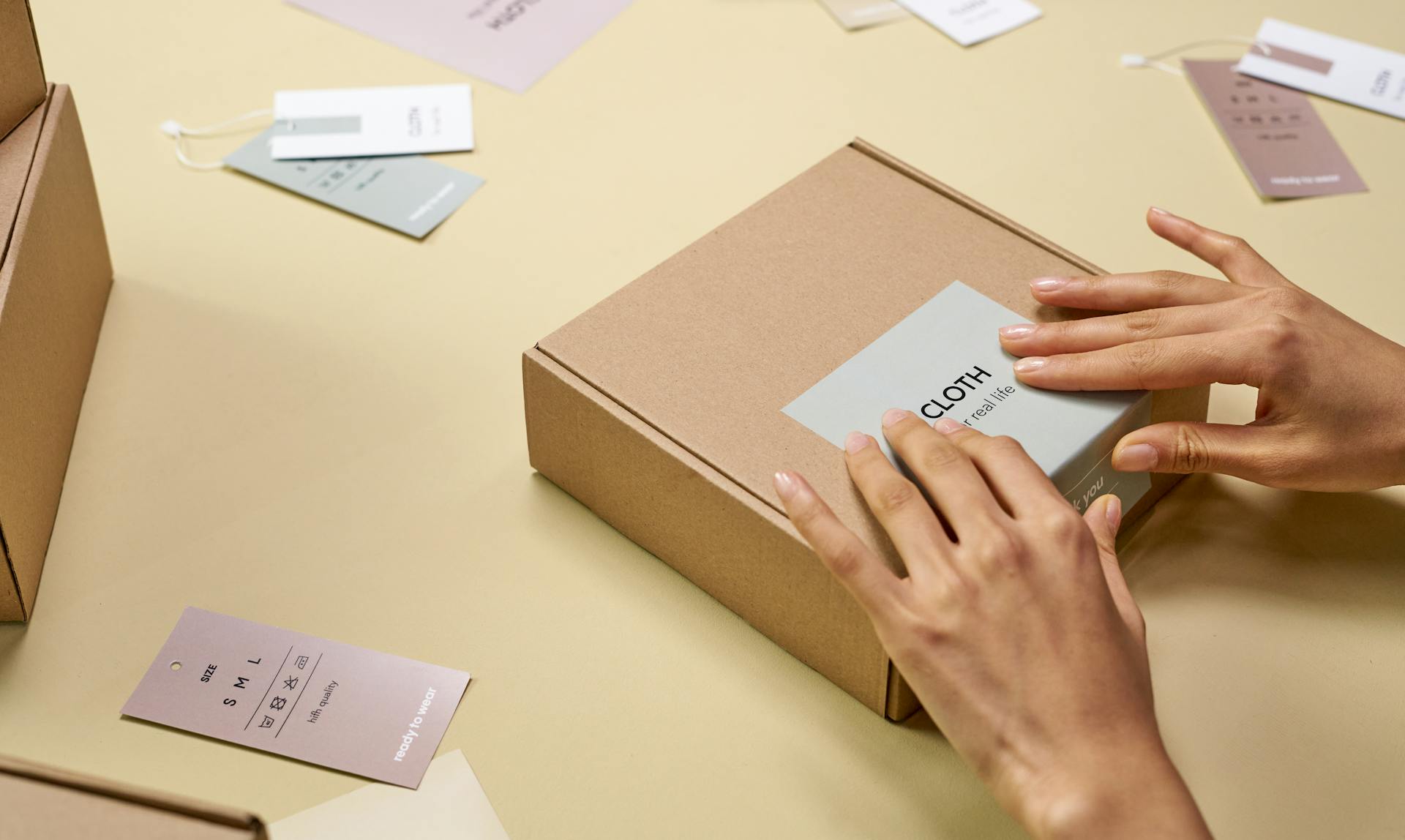
The EPA regulates devices like UV lights, ultrasonic devices, and replacement parts, requiring labels that include the required information and are prominently displayed.
The FDA is proposing a front-of-package (FOP) nutrition label, referred to as the Nutrition Info box, to provide accessible, at-a-glance information to help consumers quickly and easily identify how foods can be part of a healthy diet.
Here is a list of some of the labeling requirements:
- Fair Packaging Labeling Act (FPLA)
- Poison Prevention Packaging Act (PPPA)
- Uniform Packaging and Labeling Regulation (UPLR)
- US Law Label
- EPA-regulated devices Label
- FDA's proposed FOP nutrition label
- Textile, Wool and Fur Acts and Rules
- FCC 47 CFR Part 15 Device Labeling Requirements
- 16 CFR Part 323: Made in USA
- Country of Origin Marking
- CPSIA Tracking Label
- Care Labeling of Textile Wearing Apparel & Certain Piece Goods
The National Conference on Weights and Measures (NCWM) has eliminated barriers to the use of metric units in trade and commerce, allowing for metric labeling on non-consumer packages for over 20 years.
The Guide for Labeling Consumer Package by Weight, Volume, Count, or Measure (NIST SP 1020) provides an overview of the requirements for labeling packaged goods to be offered for sale and is based on the UPLR.

The Unit Pricing Guide: a Best Practice Approach to Unit Pricing (NIST SP 1181) provides comprehensive unit pricing label guidance.
To facilitate the expansion of exports by U.S. manufacturers, NIST recommends updating the Fair Packaging and Labeling Act (FPLA) to create a new package labeling option, allowing U.S. packers to continue using the Dual Unit option and adding an additional Metric label option.
Products manufactured in the United States must display the "Made in the USA" label, unless the product's components are sourced from outside the US.
Country of origin marking is mandatory for almost all consumer products sold in the United States, and must be applied to the product or packaging, depending on the size and exemptions.
Toys and other children's products (intended for 0-12 years) imported or manufactured in the United States must carry a permanent CPSIA tracking label that provides identifying information such as manufacturer name, US address, and US phone number.
Intriguing read: Ups Tracker Code
Lithium Battery

Lithium batteries have their own labeling requirements in various regulations. Different types of batteries have their own labeling requirements, and lithium batteries are no exception.
The labeling requirements for lithium batteries are explained in the article section "Lithium Battery Labels". This is where you can find out more about the specific labeling requirements for lithium batteries.
In various regulations, lithium batteries are required to have certain labels. These labels help ensure that lithium batteries are handled and used safely.
Button Cells and Coin Batteries
Button cells and coin batteries have specific labeling requirements.
16 CFR Part 1263 sets warning label requirements for consumer products that contain these types of batteries.
Toy products for children under 14 years old are exempt from the requirements of 16 CFR Part 1263 if they are designed for children below 14 and comply with battery accessibility and 16 CFR Part 1250's labeling requirements.
Zinc-air button cell and coin batteries are also exempt from the requirements of 16 CFR Part 1263.
Note that not all button cells and coin batteries require warning labels.
UL Mark
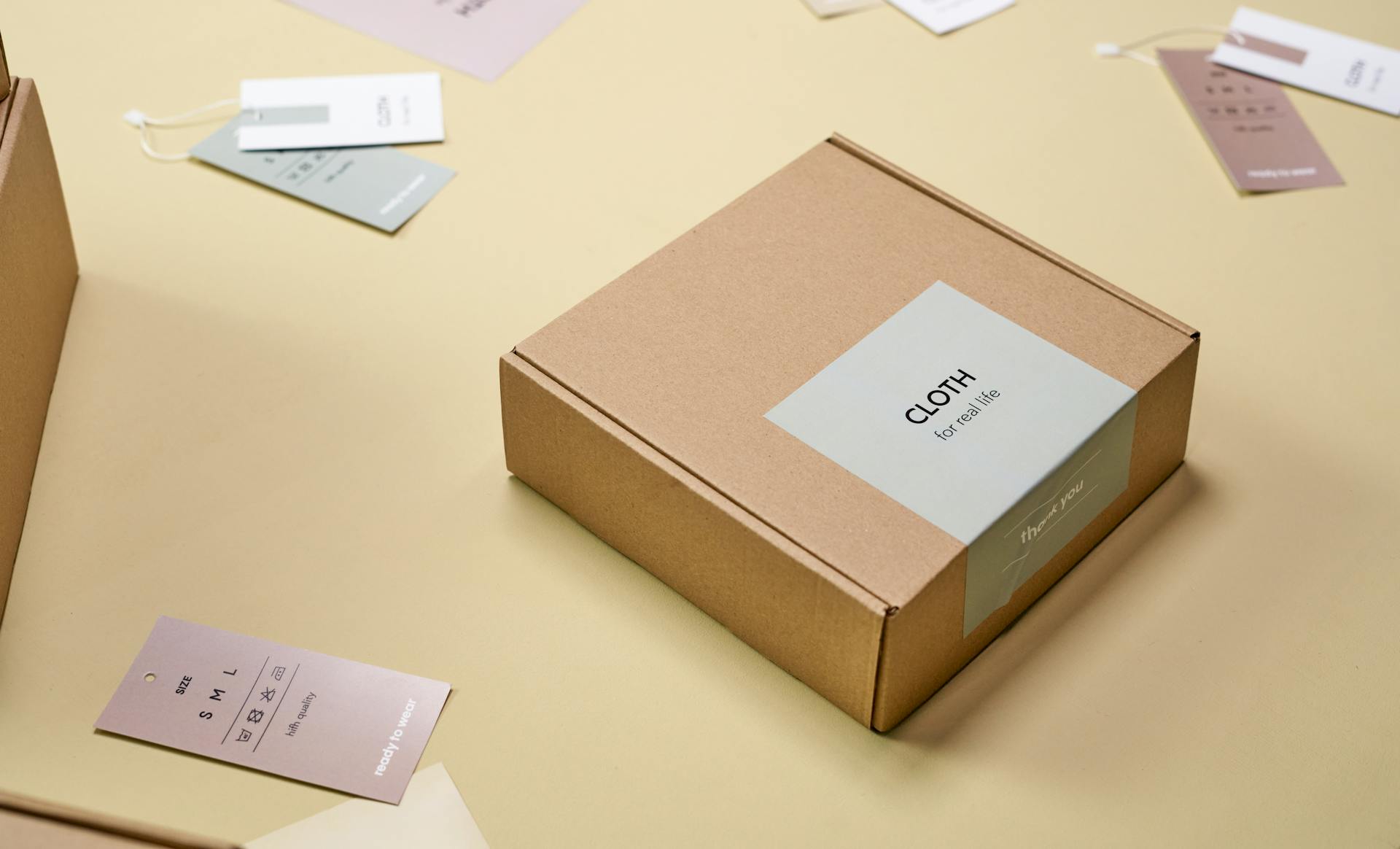
The UL Mark is a crucial label to understand, especially for manufacturers and businesses. The Underwriter Laboratories (UL) mark indicates that the product has passed the UL testing and certification process.
You can't just slap the UL mark on any product, it has to have passed the relevant testing.
The UL mark is a guarantee that the product meets certain safety standards.
If a product hasn't passed the testing, you cannot affix the UL mark to it, period.
If this caught your attention, see: Product Packaging Testing
Art Materials
Art materials have specific labeling requirements to ensure safety.
The CPSC sets labeling requirements for art materials under the Labeling of Hazardous Art Materials Act (LHAMA).
You might need to register to obtain a Uniform Registry Number (URN) to comply with these regulations.
A fresh viewpoint: Plastic Packaging Materials
Exemptions and Variations from Label Statements
Small packages can be exempted from declaring net quantity of contents due to regulations established by Section 403(e) of the act.
The act also provides for exemptions from declaring ingredients where it's impractical or results in deception or unfair competition, as stated in Section 403(i).
Section 502(b) and Section 602(b) of the act allow for reasonable variations and exemptions for small packages from required declarations of net quantity of contents.
You might be wondering how these exemptions are proposed, well the Commissioner can propose a variation or exemption based on these statutory provisions.
Section 5(b) of the Fair Packaging and Labeling Act requires a finding that full compliance with required declarations is impracticable or not necessary for adequate consumer protection.
A further finding that the nature, form, or quantity of the packaged commodity or other good reasons justify such exemptions is also necessary.
The Commissioner can propose a variation or exemption based on these findings, as stated in parts 10, 12, 13, 14, 15, 16, and 19 of this chapter.
Certifications and Warnings
In the United States, certain products require special labeling to ensure consumer safety. For example, products sold in California must comply with California Proposition 65, which restricts around 900 chemicals and heavy metals.
You can either get your product lab-tested to prove it doesn't contain any of these restricted chemicals or ensure it carries a warning label. Some products, like small parts and latex balloons, also require choking hazard warnings.
If you're selling a product that's meant for children between 3 and 6 years old, you'll need to include a warning label with the warning symbol, the word "WARNING", and the words "CHOKING HAZARD" before the actual warning.
Choking Warning (CPSIA)
Choking Warning (CPSIA) is a crucial labeling requirement for certain products, especially those meant for young children. It's essential to understand what triggers this warning.
The 16 CFR Part 1500.19 sets choking hazard labeling requirements for specific items. These include small parts, balls and small balls, latex balloons, and marbles.
You'll need to include the warning symbol, the word "WARNING", and the words "CHOKING HAZARD" before the actual warning. This is a standard requirement.
The warning for small parts only applies to products intended for children between 3 and 6 years of age. Other warnings target different age groups.
Here are the specific items that require choking warning labels:
- Small parts
- Balls and small balls
- Latex balloons
- Marbles
Other Warning

Other warning labels are required for specific products, such as toys, bunk beds, and crib mattresses. These requirements come from specific CPSC standards or ASTM standards that are incorporated by reference.
The Safety Standard Mandating ASTM F963 for Toys incorporates by reference ASTM F963, which sets warning requirements for toys. This is outlined in 16 CFR 1250.
Bunk beds must meet the Safety Standard for Entrapment Hazards in Bunk Beds, which sets warning requirements directly. This is outlined in 16 CFR Part 1213.
Crib mattresses also have specific warning requirements, which are set directly in 16 CFR Part 1241.
On a similar theme: Amazon Polybag Requirements
USDA Organic Seal
The USDA Organic Seal is a mark that's protected by the government, and it's used by companies and farms to show that their products are organic.
If a product contains 100% organic ingredients, it can bear the "100 Percent Organic" claim and/or the USDA organic seal. This seal is a big deal, and it's a guarantee that the product meets the highest standards.
See what others are reading: Security Seal
If a product contains at least 95% organic ingredients, it can also bear an "Organic" claim and/or the USDA organic seal. This is a great option for consumers who want to make sure their products are mostly organic.
On the other hand, if a product contains at least 70% of organically-produced ingredients, it can use the "Made with Organic [insert 1–3 ingredients]" claim, but it can't carry the USDA Organic Seal. This is still a good choice, but it's not as strong as the other options.
Here's a quick rundown of the different options:
- 100% organic ingredients: "100 Percent Organic" claim and/or USDA organic seal
- At least 95% organic ingredients: "Organic" claim and/or USDA organic seal
- At least 70% organic ingredients: "Made with Organic [insert 1–3 ingredients]" claim, but no USDA Organic Seal
- Less than 70% organic content: no "organic" claim or USDA Organic Seal
It's worth noting that the organic ingredients should be listed on the label, so you can see exactly what you're getting.
Ca Prop 65 Warning
California Proposition 65 restricts around 900 chemicals and heavy metals in consumer products sold in California.
You can either get the product lab-tested to prove that it doesn’t contain any of the listed chemicals, or ensure that the product carries a warning label.

Products sold in California must have a warning label if they contain any of the listed chemicals.
The warning label will look something like this: “This product can expose you to chemicals including [name of chemicals] which are known to the State of California to cause [cancer/birth defects or other reproductive harm]. For more information go to www.P65Warnings.ca.gov”
If you're selling products on Amazon, you'll need to comply with California Proposition 65 warning labels.
The warning label is a way to inform customers that the product contains chemicals that are known to cause harm.
For more information, you can visit the website www.P65Warnings.ca.gov.
Product Requirements
The Fair Packaging and Labeling Act (FPLA) only applies to packages that are sold on the basis of weight or measure. This means it doesn't cover electronic or industrial equipment.
Packages are classified into two types: consumer and non-consumer. Consumer packages are intended for sale in retail stores, while non-consumer packages are meant for wholesale trade.
For another approach, see: Branson Group Packages
The FPLA doesn't apply to all packaged goods, so manufacturers must check if their products fall under the act's requirements. Some packaged goods, like food and department store items, are subject to labeling requirements.
The FPLA was amended in 1992 to include metric units on package labels. This was done to help consumers learn to equate familiar quantities with metric units of measure.
Worth a look: Box Cover Units
Frequently Asked Questions
What is package labelling?
Package labelling involves attaching tags or stickers to products with essential information like contents, instructions, and manufacturer details. This helps consumers make informed decisions and ensures compliance with regulations.
Sources
- https://www.fda.gov/food/nutrition-food-labeling-and-critical-foods/front-package-nutrition-labeling
- https://www.nist.gov/pml/owm/packaging-and-labeling
- https://www.gibsondunn.com/fda-publishes-proposed-rule-on-front-of-package-labeling-what-you-need-to-know/
- https://www.ecfr.gov/current/title-21/chapter-I/subchapter-A/part-1/subpart-B
- https://www.compliancegate.com/united-states-product-labeling-requirements/
Featured Images: pexels.com
